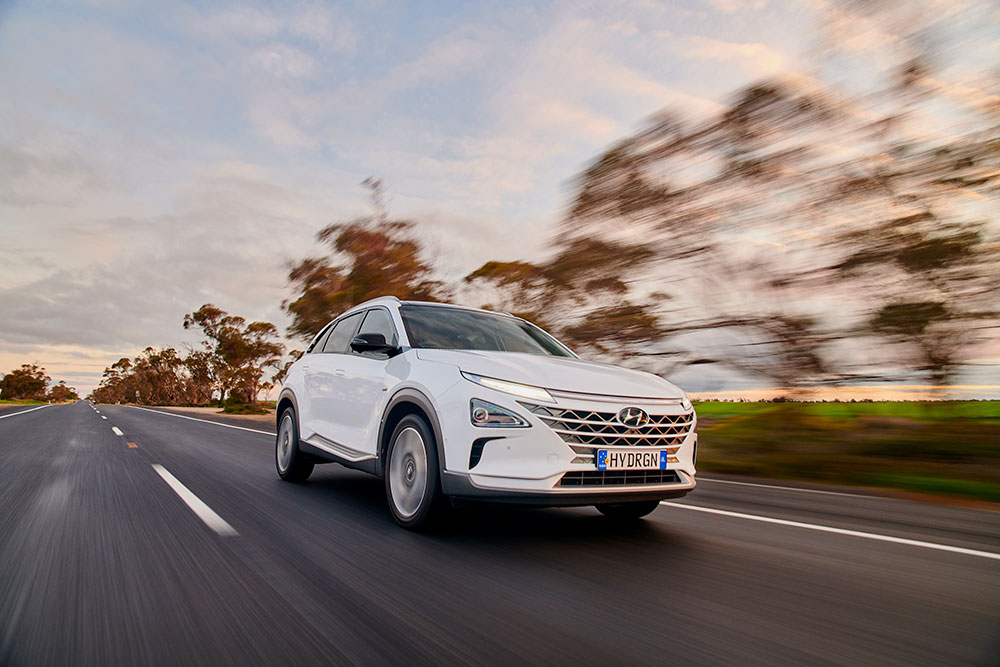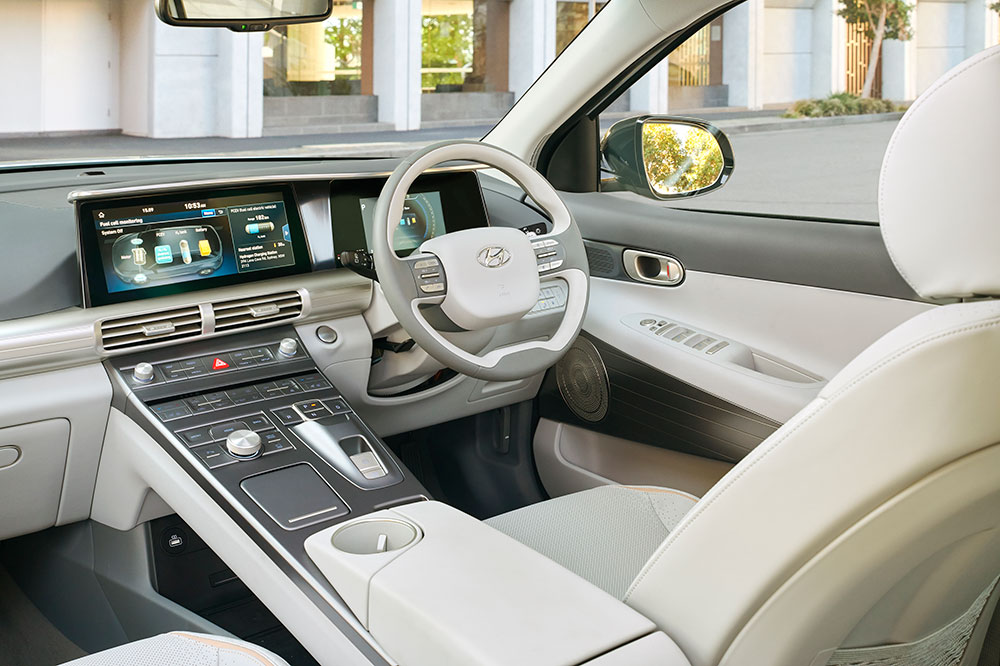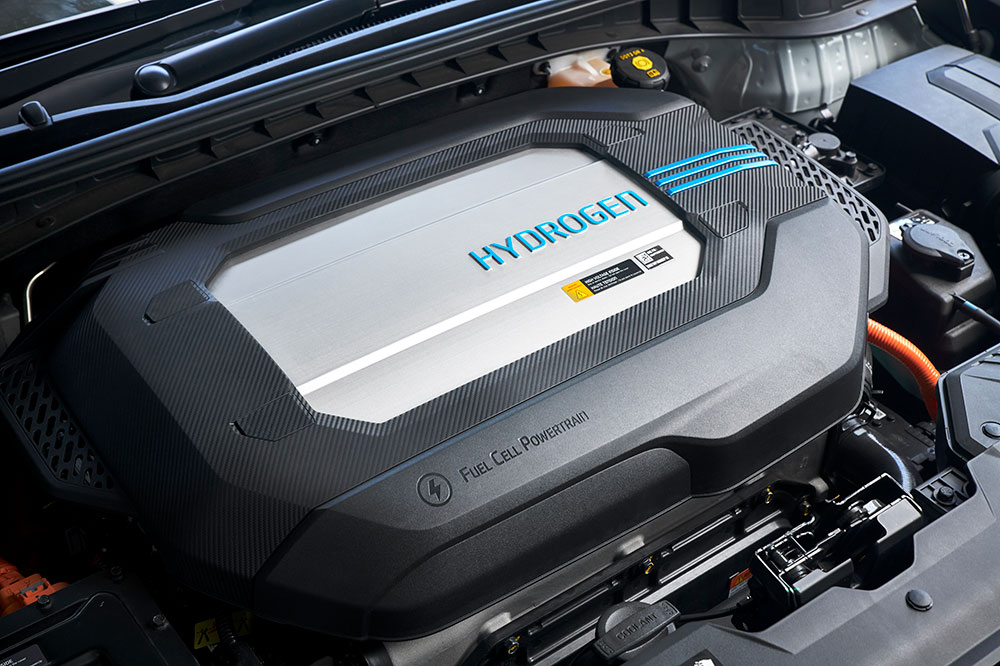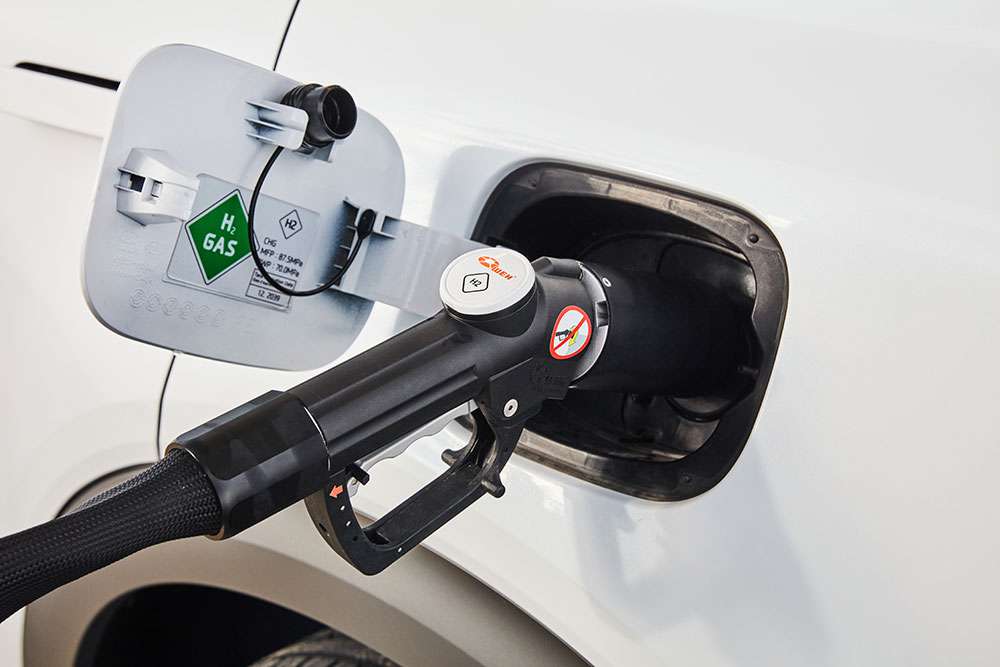Clearing the air with hydrogen vehicles
The technology behind hydrogen-powered vehicles can deliver a great outcome for the environment.

“Like a vacuum cleaner for the air” is how the man in charge of Hyundai’s hydrogen fuel cell development Dr Sae-hoon Kim describes the company’s Nexo fuel cell electric vehicle (FCEV).
Dr Kim was referring to the fact the Nexo emits only water and cleansed air into the atmosphere when running.
Understanding how this occurs is central to understanding the workings of an FCEV like the Nexo.
Just like battery electric vehicles (BEVs), FCEVs use electricity to power their motor. But where a BEV draws charge from its battery, an FCEV generates electric current by combining hydrogen and oxygen in a fuel cell.
The hydrogen comes from high-pressure tanks located beneath the car, while oxygen is drawn from outside the vehicle, passing through an air purification system that cleans it of particulates and other unwanted matter, before using and discharging it.

In effect, an FCEV has a mild atmospheric scrubbing effect, hence Dr Kim’s vacuum cleaner analogy.
The only byproduct of this process is distilled water, which is discharged as vapour from beneath the vehicle, sometimes seen as a visible splash when an FCEV driver presses hard on the accelerator.
The 95kW fuel cell stack at the Nexo’s heart is part of a sophisticated powertrain that also comprises three compressed hydrogen tanks, a 1.56kWh lithium-ion battery and an integrated 120kW/395Nm electric motor.
Mounted under the bonnet, the fuel cell draws in air that is first purified then combined with hydrogen to generate the chemical reaction that produces electrical energy.
This electrical energy is then fed to either the battery or directly to the electric front-drive motor.

The Nexo’s combined system outputs of 135kW/395Nm are enough to endow it with 0-100km/h acceleration of 9.5 seconds and a claimed top speed of 179km/h, making it broadly competitive with similarly sized petrol and dieselpowered models.
Where the Nexo diverges from these rivals is in the fact that it produces zero tailpipe emissions.
It also differs from BEVs with its impressive 666km electric range and the ability to refuel its 156.6L hydrogen tanks in three to five minutes.
While some of the best BEVs, such as the Tesla Model S, can almost match the Nexo’s range, no current charging technology gets close to its rapid refuelling time.
The Nexo’s hydrogen supply is stored in three carbon-fibre-reinforced plastic (CFRP) tanks that are packaged beneath the vehicle floor with a combined capacity of 6.3kg.

The tanks look like the LPG tank you might see in the boot of a Falcon taxi but are super-strong and designed to prevent gas leakage and remain safe in the event of an accident.
Aside from this, the Nexo looks like many other medium-sized SUVs, including Hyundai’s similarly sized Tucson.
Its styling is attractive but not especially remarkable, with slimline headlights and recessed door handles that pop out when you touch them among the few ‘gee-whiz’ elements.
The handsomely finished interior makes more of a futuristic statement with a large and buttonheavy centre stack, plus twin LED display screens that provide encyclopaedic detail on the vehicle’s operation.
In short, there’s a lot to like about Australia’s first road-registerable FCEV but because of the refuelling challenges the Nexo will initially be available only to fleets, on a lease and loan basis, with a monthly fee that covers registration, insurance, service, and maintenance costs.
Related topics
Things to note
The information in this article has been prepared for general information purposes only and is not intended as legal advice or specific advice to any particular person. Any advice contained in the document is general advice, not intended as legal advice or professional advice and does not take into account any person’s particular circumstances. Before acting on anything based on this advice you should consider its appropriateness to you, having regard to your objectives and needs.
Insurance Products (excluding Travel Insurance) are issued by RACQ Insurance Limited ABN 50 009 704 152 (RACQI) and arranged by its agent, RACQ Distribution Services Pty Ltd (RDS) ABN 35 116 361 650, AFSL 567130 and RDS' authorised representatives (including RACQ Operations Pty Ltd ABN 80 009 663 414, AR No. 234978 (RACQO). Conditions, limits and exclusions apply. RDS and RACQO are in the RACQ group of companies. One of the companies in the RACQ group of companies has a minority shareholding in RACQI.
RDS and RACQO have not taken your personal objectives, circumstances or needs into account when preparing advice regarding insurance products and you will need to consider whether the advice is appropriate for you. Read the Product Disclosure Statement (PDS) and any applicable Supplementary PDS before making a purchase decision on this product. You can also access our Target Market Determinations on this website. RDS receives a commission from RACQI for the policies it arranges. RACQO receives fees paid for services it provides to RDS. Further details about remuneration are available on request prior to purchasing.
Banking and loan products issued by Members Banking Group Limited ABN 83 087 651 054 AFSL/Australian credit licence 241195 trading as RACQ Bank. Terms, conditions, fees, charges and lending policies apply. This is general advice only and may not be right for you. This information does not take your personal objectives, circumstances or needs into account. Read the disclosure documents for your selected product or service, including the Financial Services Guide and the Terms and Conditions, and consider if appropriate for you before deciding.
Except for RACQ Bank, any RACQ entity referred to on this page is not an authorised deposit-taking institution for the purposes of the Banking Act 1959 (Cth). That entity’s obligations do not represent deposits or other liabilities of RACQ Bank. RACQ Bank does not guarantee or otherwise provide assurance in respect of the obligations of that entity, unless noted otherwise.
RACQ Bank subscribes to the Customer Owned Banking Code of Practice which establishes higher standards than the law requires. The Code reflects modern consumer expectations and developments in approaches to issues such as consumer vulnerability, guarantors, and supporting customers through financial hardship. Please read our Customer Owned Banking Code of Practice page for more information.
RACQ Operations Pty Ltd (ABN 80 009 663 414 AR 000234978) and Members Travel Group Pty Ltd (ABN 45 144 538 803 AR 000432492) are acting as an Authorised Representative of the issuer of the insurance, Tokio Marine & Nichido Fire Insurance Co., Ltd. (ABN 80 000 438 291 AFSL 246 548). Any advice set out above is general in nature only, and does not take into account your objectives, financial situation or needs. Before purchasing any travel products, please consider the RACQ Travel Insurance Product Disclosure Statement (PDS) and the Target Market Determinations (TMDs) that apply to these products. Whilst the PDS outlines the Terms and Conditions of these products, the TMDs outline the intended class of customers that comprise the target market for these travel products. This will allow you to consider which products best suit your objectives, financial situation and needs and consider the products appropriateness to your personal circumstances. TMDs also outline matters involving the distribution and the review of these products. The PDS, Supplementary PDS and TMDs for each travel product can be found here.

